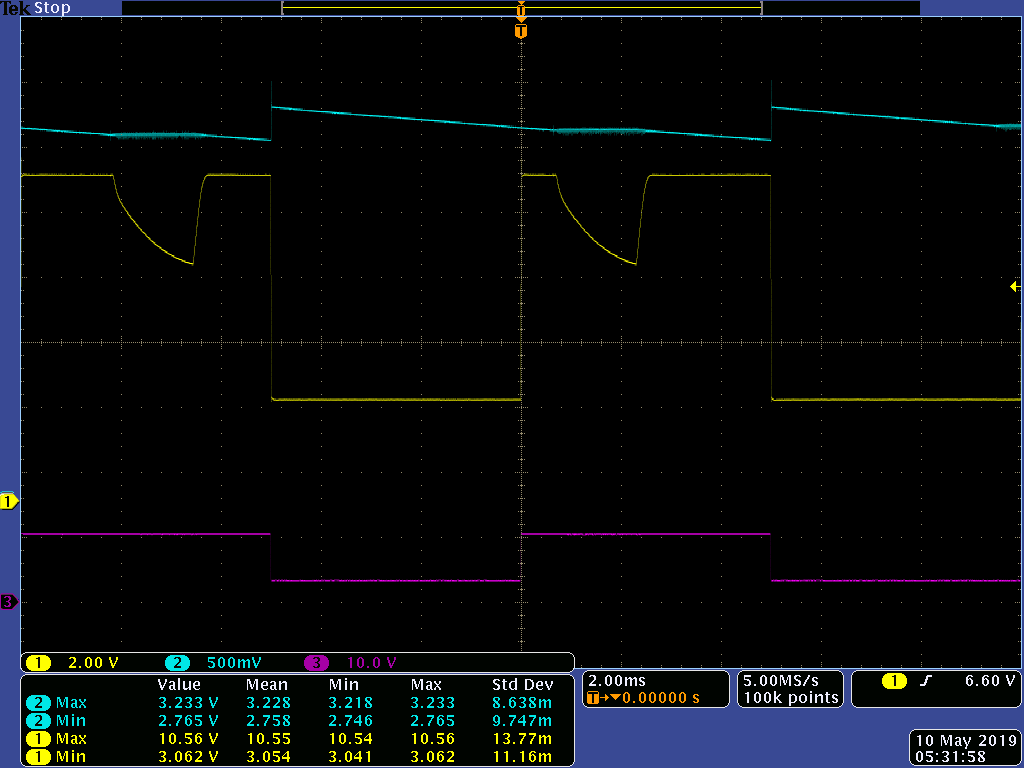Other Parts Discussed in Thread: ISO224, BUF634
Hi,
I'm seeing some strange behavior at the output of INA128 and I was hoping that someone could help identify what might be going wrong.
The input, shown in magenta, is a roughly 3-10 V square wave input @ 50% duty cycle. My INA128 has no gain resistor, so it's programmed for unity gain. You can see that the output of the amplifier (yellow, ch. 1) basically supports that, as it's shown to be 3-10.5. However, during the high portions of the square wave, the output of the amplifier collapses for a short while for whatever reason. This is especially problematic for my application because I have a falling edge detector on the output of INA128, and this output is causing a false falling edge trigger.
Regards,
Michael



